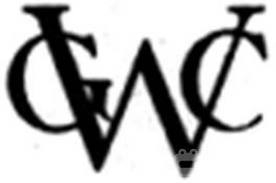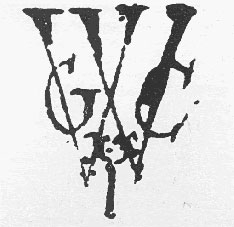
Korisios
-
Posts
565 -
Joined
-
Last visited
Content Type
Profiles
Forums
Events
Gallery
Posts posted by Korisios
-
-
Great work I whas thinking of maybe do the same thing sometime.
Did you bind the pages yourself also?
I am plannimg to convert some more modern books into older looking ones to be able to have them laying around in the display...
But this conversioon wil only be putting a leather wrap around them...
-
Great thanks, mind you that the early ones I am talking about are different then the later one.


-
On a lot of drawings of officers from the beginning of the 18th century and on, I see Epaulets on the right shoulder.
Is there anyone wo can point me to a pattern and/or construction illustrations, or ideas of these??
-
Cool clothing info and a view patterns in PDF
-
writing
-
I just reseved tge book "18th Century Embroidery Techniques" by Gail Marsh.
Allready red it one's and looked throu it manny time's now.
These examples are amazing! What a lot of work!!
Compared to these examples the uniform I showed here is realy crude.
Any howe it must be my female side and my interrest for decoration styles but I like this book!
Thanks!
-
Put me down for a Spanish buckle to also...
-
-
Is there a digital document of the actual periodocal or maybe just the article?
-
-
Some nice lace, Korisios.
I'm pondering if Whitework would mimic to some extent the lace like that on the cravats?
What be yo'r thoughts on whitework?
~Lady B
Hi Lady (and others)
I just red in the book "18th Century Emboidery Techniques from Gail Marsh", that indeed whitework is a period correct substitution for the much more expencive lace...
It appeared moslty to be used for (I quote the book here) handkerchiefs, aprons and cravats...
there you go..

-
confused...
 ;)
;) 
-
I Quess you people allready know this one, but it is realy great!
They have uniforms weapons maps and charts you name it!!
-
West Indian company? The logo looks great. What more info do you have on this company? I'm intregued.
~Lady B
Like the name inplyed, they went the opposite direction of the VOC, towards america and the Caribbean.
however after they sold New Amsterdam to the English (one of the most stuppid things whe ever did in history)the organisation declined a bit. If it wasn't so I could have typed this post in my own mothers tongue...

oh, and they had cuns to... very nice ones that is to say...

-
Sinds where dealing here mostly about the west i thought a logo of the west indian compagnie might by interresting also...


-
CHIMAY Pères Trappistes.
9%
-
Peter PAN?
I say:
Fried egg
-
To start with it depends the material the whitework starts with as long as that is allready tranparant, to me it can look confincing. (from a distance)...
-
I resently had a Corona and used my new tin mug for it... Yack!
I quess such a bear doesn't combine very wel with a tin mug.

So what kind of beer does???
Or: what beer of today resembles the moost of what they drank back then??
cheers!
-
Italy and Spain were the 2 main sources of miquelet locks during the GAoP roughly with much od the med (northern africa) developing similar miquelet locks at a later date. The Italian pieces typically employed a main spring that pushed down onthe foreward piece of the cock. The Spanish locks typically pushed up on the back of the cock. I am currently working on reproducing an Italian piece that is comparable.
Swab
Pictures!!

-
-
Oh men this is so cool and interresting!
My Spanish is still a bit rudimentairy but I am shure it wil get better by the time...

-

This is lace I resently bought on a market here in my town...
If I look at what is shown here on this thread, I think I didn't to bad on buing the two narrower strips...

the wide one with the squares is most like to modern...

-
Hi Cripps, i had no qlue that you where into this and are translateting these documents my question was just a question without the meaning of having you to do or make anything.
But now you mention it...

I would like to greate (print) a library of copied and made(fake) Spanish documents to illustrate the audience what Spanish colonial live was about in let's say 1720...
So if you don't mind i would like to ask you what it is you do and if you have anything allready digital that I could/may print and use...?
I am especialy interrested in Spanish stuff related to New Spain (Guatemala, Mexico Honduras etc.)...
This is a 1673 Broadside entitled Vrbis, & Orbis that was printed in Guatemala

Unfortunately the pictures to small to make out any detail and they want $12,000 for the original.
Our image above shows clearly that we have in hand an intact bifolium, i.e., two copies, as printed, on an uncut half sheet—one on the recto (at right, in the image, showing through the paper), and one on the verso (at the left)—the two never having been separated.
Guatemala was the fourth Latin American city to have a printing press (after Mexico, Lima, and Puebla de los Angeles); the press was brought at the instigation of the bishop of Guatemala, Payo Enríquez de Ribera, who wished to have a work of his own published. In reply to the bishop's appeal for a printer, José Pineda Ibarra arrived at Antigua in 1660. He had worked as an assistant to several printers in Mexico, but according to Medina did not have his own press; when Payo de Ribera's representative found him, he had moved to Puebla, but was apparently not doing well there. (Medina does not list him as a printer in Puebla—presumably he was again working for others.) The bishop apparently paid for the press that was taken to Guatemala, and Pineda Ibarra later purchased it from him. Torre Revello (quoted in Furlong) remarks that despite the dearth of materials, Pineda Ibarra managed to print exceedingly well: "Ningún tipógrafo de los que le sucedieron, durante el periodo colonial, logró superar la pulchritud y elegancia de sus trabajos." This example shows not only several sizes of type, but a woodcut of a papal tiara, at the top of the edict, flanked by typographical ornaments; a line of typographical ornament also appears on either side of the date of the edict, near the bottom of the page.
The various religious orders in Guatemala had promised to make it worth the while of a printer to come, by giving him commissions. Judging from the list of over 30 works Pineda Ibarra printed before 1673—eulogies, sermons, constitutions, regulations, descriptions of religious festivities—the orders fulfilled their promise; his major productions, however, were Bishop de Ribera's Explicatio apologetica nonnullarum propositionum . . . , 1663, and Diego Saenz Ovecuri's La Thomasiada, 1667. Also a bookseller and binder, Pineda Ibarra died in 1679. He was succeeded in 1681 by his son, Antonio de Pineda Ibarra, under whom the press operated until 1721.
The text in hand, a papal edict of 23 July 1672, changes the office for St. Peter Nolasco used by Mercedarians from semiduplex to duplex, at the request of the Queen of France. The Orden Real de Nuestra Señora de la Merced, Redemción de Cautivos, was already established in Guatemala (cf. Medina, Guatemala, 38), and probably paid Pineda Ibarra to print this work. • Not in Medina, Guatemala; on the printer, see: Medina's introduction, pp. xviii–xx. Not in Valenzuela, Imprenta en Guatemala; O'Ryan, Bib. Guatemalteca; NUC; BMC. See, however, Oswald, p. 539; Furlong, Orígenes, p. 91; and Woodbridge and Thompson, Printing in Colonial Spanish America, pp. 81–84.
Cool info! Thanks PoD!

Leather Bound Logbooks
in Crafting Kit
Posted
Yeah great I am definatly or going to try that one time...